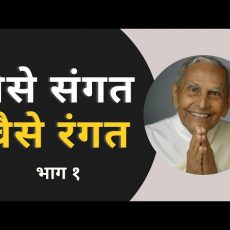By Swami Anand Kul Bhushan
Mention the word ‘Sufi’ in North India, and the instant response is ‘Mast Kalandar’, a popular qawwali or chorus song. But few people know that it honours a very revered Sufi saint, Jhoole Laal Shahbaz Qalandar (1177–1274), who lived in Sehwan in Sindh, Pakistan. Wearing red clothes, he loved to sit on a swing, so he was called Jhoole (swing) Laal (red). Revered by Muslims and Sindhi Hindus, his shrine draws thousands of pilgrims to this day. Happyho also provides best Meditation and Tarot classes in Noida and Delhi NCR India area
Moinuddin Chishti of Ajmer
Khawaja Ghareeb Nawaz, formally known as Moinuddin Chishti (1142–1236) was a Persian Muslim preacher, ascetic, religious scholar, philosopher, and mystic from Sistan, Iran, who ended up settling in Ajmer, Rajasthan, India. He is one of the first Muslim mystics to approve of music in devotion and hymns. After his death, his tomb in Ajmer has become famous for all religions and has been visited by the common people as well as rulers, emperors and heads of state from many parts of the world. The Sufi blend of Islamic faith and Hindi devotion was laid by him with music and dancing.
Baba Farid of Faridkot
Around the same time, another mystic, Farid al-Din Maud Ganj-i-Shakar simply known as Baba Farid (1179 – 1266) was born near Multan, Punjab. After his early education, he moved to Delhi, to learn about Islam from his master, Qutbuddin Bakhtiar Kaki. After Kaki’s death, he settled in Pakpattan, Pakistan.
The city of Faridkot in Punjab, India, bears his name. Legend has that Farid stopped here and sat in silence for 40 days. This so impressed the king that he named the city after this Sufi. In the holy city of Jerusalem, in a place called Al-Hindi Serai (Indian lodge or shrine), it is claimed Baba Farid lived for many years in the early 13th century. A most distinguished mystic, his poetry in Punjabi is popular with Muslims, Hindus and Sikhs.
Nizamuddin Auliya of Delhi
The famous Sufi of Delhi, Hazrat Nizamuddin or Syed Muhammad Nizamuddin Auliya (1238 –1325), was born in Uttar Pradesh. At the age of five, his father died and he came to Delhi to live with his relative.
At the age of twenty, while passing through Faridkot, Nizamuddin met Farid and went on to become his disciple. He later settled in Delhi and his shrine has become famous for seekers in Sufism. He stressed love to realise God. This love meant love of humanity, religious pluralism and kindness.
Amir Khusrow – Mast Kalandar
A disciple of Nizamuddin, Amir Khusrow Dehlavī, (1253 – 1325), was a Sufi musician, poet and scholar of Delhi. Hailed as the ‘father of Urdu literature’ and ‘father of qawwali’ he was an iconic figure in the cultural history of South Asia. He wrote Mast Kalandar qawwali as a prayer.
Amir Khusrow was born near Etah, Uttar Pradesh, and moved to Delhi. Married to a daughter to a Hindu Rajput noble, he moved to Delhi. He was raised by his maternal grandfather, a Rajput, thus imbibing both Islamic and Hindu cultures. Just six months after the death of his master, Nizamuddin, Khusrow also passed away and his grave is right next to his spiritual master in Nizamuddin Dargah in Delhi. A prolific poet of the royal court, his songs and riddles became part of popular Hindavi culture.
Bulleh Shah of Lahore
The most famous Sufi-poet of Punjab, Bulleh Shah or Syed Abdullah Shah Qadri, (1680–1757), was the son of a scholar, teacher and priest who knew many languages. After studying in Kasur, he also became a scholar. Later, he returned to Lahore and became a disciple of a simple farmer, Shah Inayat Kadri, whose rustic and down to earth teachings appealed to him. His family was shocked but he persisted. His compositions are so folksy and popular that they have become legendary even in movies and pop singles. His lifespan also overlapped with the Punjabi poet Waris Shah (1722–1798), of Heer Ranjha fame.
Bulleh Shah recast the qawwali, Mast Kalandar, sung in hundreds of versions by all great artists in classical and popular styles; as it remains as fresh as when it was first presented over 600 years ago.
ENDS



